How to Make a Toilet Flush Better | Make a Toilet Flush Stronger!
Last Updated on August 6, 2023 by toilethaven
Why Does My Toilet Have a Weak Flush?
It is very frustrating for you and your guests when you have to flush the toilet twice every time you use the bathroom for the waste to go away. In this post, I will show you how to strengthen a weak flushing toilet flush.
If you have a weak/slow flushing toilet, it is a sign that your toilet drain is partially clogged, the rim jets are blocked, the water level in the tank is too low, the flapper is not opening fully, or the vent stack is clogged.
To improve your toilet flush, ensure the water level in the tank is just about ½ inch below the overflow tube, clean the rim holes and siphon jet, ensure the toilet is not clogged even partially, and adjust the flapper chain length. Don’t forget to clear the vent stack as well.
The way a toilet works, for you to have a strong flush, enough water has to be dumped inside the toilet bowl so fast. If the water entering your toilet bowl is not enough or flowing in slowly, the toilet’s siphon action will be insufficient and, therefore, a weak flush.
How to Make a Toilet Flush Stronger
Fixing a toilet with a weak flush is an easy task. You don’t need to call in a plumber unless everything you try fails. It is also inexpensive since you do not need to buy any replacement parts.
1. Unclog the Toilet
There are two types of toilet clogs. The first one is where the toilet is fully clogged, and when you flush it, water does not drain from the bowl.
The second one is where the water drains from the bowl slowly, resulting in a weak flush. When you flush the toilet, the water rises in the bowl and drains slowly. If this is the case with your toilet, then you have a partial clog that you need to remove.
To be sure this is the problem, you will need to carry out the bucket test. Fill a bucket with water, then dump the water in the bowl all at once. If it does not flush as powerfully as it should, then there lies your problem.
By carrying out this test, you can isolate all the other potential causes of a weak flushing toilet. There are many ways to unclog a toilet, but the best ones are plunging and snaking.
Start by using a bell-shaped plunger which is the best plunger for toilet drains. This is a detailed guide on how to plunge a toilet.
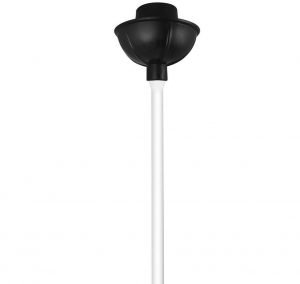
After plunging for some time, repeat the bucket test. If the problem is solved, then your work is done. If the toilet still has a weak flush, you will need to upgrade to a toilet auger. This is how to use a toilet auger.
2. Adjust the Water Level in The Tank
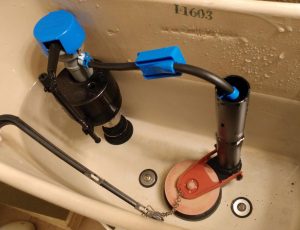
Whether you have a slow-flow or a 3.5-gallon per flush toilet, its toilet tank has to hold a certain amount of water in order for it to flush optimally. If the water level is lower than that, you will suffer a weak flushing toilet.
Ideally, the water level in the toilet tank should be about 1/2 -1 inch below the overflow tube. The overflow tube is the big tube in the middle of the tank. It channels excess water in the tank down to the bowl to avoid overflowing.
Adjusting the water level in a toilet tank is so easy. You will only need a screwdriver.
- Remove the toilet tank lid and place it away in a safe place where it cannot fall off and break.
- Check the tank’s water level relative to the overflow tube’s top.
- You will need to raise it if it is lower than 1 inch.
- Check if your toilet uses a float ball or float cup.
- If it uses a float ball, there is an arm joining the ball to the fill valve. Where the arm is joined to the fill valve, there is a screw. Using the screwdriver, turn this screw counterclockwise. The water level will start to rise in the tank. Turn it until the level is where it should be.
- If your toilet uses a float cup, look for a long plastic screw adjacent to the float. Turn this screw counterclockwise with the screwdriver until the water level rises 1 inch below the overflow tube.
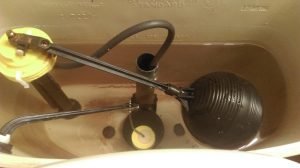
Once you have adjusted your toilet’s water level, flush it and see if it flushes powerfully. If the low water level was the reason for its weak flush, then this repair should fix it.
3. Adjust the Flapper Chain
A toilet flapper is a rubber seal that sits on top of the flush valve at the bottom of the toilet tank. It is connected to the toilet handle arm by a small chain.
When you push the toilet handle down during flushing, the lift chain, which was, until that moment, slack, picks up some tension and lifts the flapper off the flush valve opening. Water flows from the tank to the bowl via the flush valve.
For the toilet to flush powerfully, the toilet flapper has to lift off vertically. This will allow water to flow from the tank to the bowl faster, resulting in a powerful flush.
If the lift chain is too slack, it will only lift the flapper halfway. This means water will take longer to flow from the tank to the bowl and, therefore, a weak flush. The lift chain should have a ½ inch slack when the toilet handle is not operated.
Unhook the lift chain from the toilet handle arm and adjust its length. You might have to do this a couple of times to get it right. Do not make it so tight because it will unseat the flapper from the flush valve, resulting in a constantly running toilet—more about that in this post.
4. Clean the Toilet Siphon and Rim Jets
When you flush the toilet, water enters the bowl through a siphon jet at the bottom of the bowl and through holes on the rim.
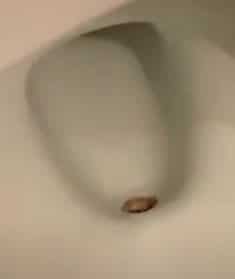
After years of usage, especially in areas with hard water, the rim jets become clogged with mineral deposits. Calcium is notorious for this.
As a result, water’s flow from the tank to the bowl is inhibited, resulting in a slow and weak flushing toilet. Cleaning the siphon jet and rim holes should reset your toilet back to its factory settings.
- Turn off the water to the toilet. The shut-off valve is the knob on the wall behind your toilet. Turn it clockwise, or if it is a push/pull valve, pull it all the way out.
- Flush the toilet and hold the handle down to remove as much water as possible.
- Remove the toilet tank lid and put it away.
- Use a sponge to soak up the water at the bottom of the bowl. Please remember to have rubber gloves on.
- As you do this, you can insert your finger in the siphon jet just to feel the extent of the calcium buildup. See if you can remove some with your finger.
- Cover the toilet rime holes with duct tape.
- Insert a funnel inside the overflow tube and slowly pour 1 gallon of vinegar. Heating up the vinegar helps it to work even better.
- If you do not have vinegar, you can use bleach mixed with water in the ratio of 1:10.
- Let the vinegar/bleach sit there for 1 hour.
When you pour the vinegar/bleach down the overflow tube, some of it will go to the rim of the bowl, where it will eat away the calcium there, while the other will sit at the bottom of the bowl, acting directly on the calcium in the siphon jest and toilet trap.
After the 1-hour mark, remove duct tape from the rim holes. Insert a 3/16″ L-shaped Allen wrench on each rim hole and turn it about to ensure they are fully opened. You can use a piece of wire if you don’t have the Allen wrench.

Turn on the water to the toilet and flush it a couple of times. Check if it is flushing better compared to before.
Cleaning the toilet siphon and rim jets should not be a one-off thing. You should do it regularly to ensure the holes are always opened—more on that in this post.
5. Unclog the Toilet Vent
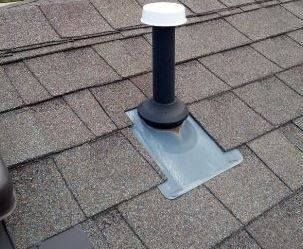
The vent stack is connected to the toilet drainpipe and other fixtures’ drain lines and runs through the house’s roof. It removes air inside the drainpipe, helping the toilet’s suction to be strong and, therefore, a powerful flush.
If the vent stack is clogged, air will have no way of exiting the drainpipe. As a result, pressure will build up inside the drainpipe and try to escape through the toilet.
In this case, the flushing power of your toilet will be significantly reduced since the waste will need to overcome the negative pressure created.
Climb to the roof of your house where the vent stuck terminates. Use a garden hose to pour water down the vent. The weight of the water will be enough to wash down the clogs down the drainpipe.
Alternatively, you can also use a toilet snake to snake the vent.